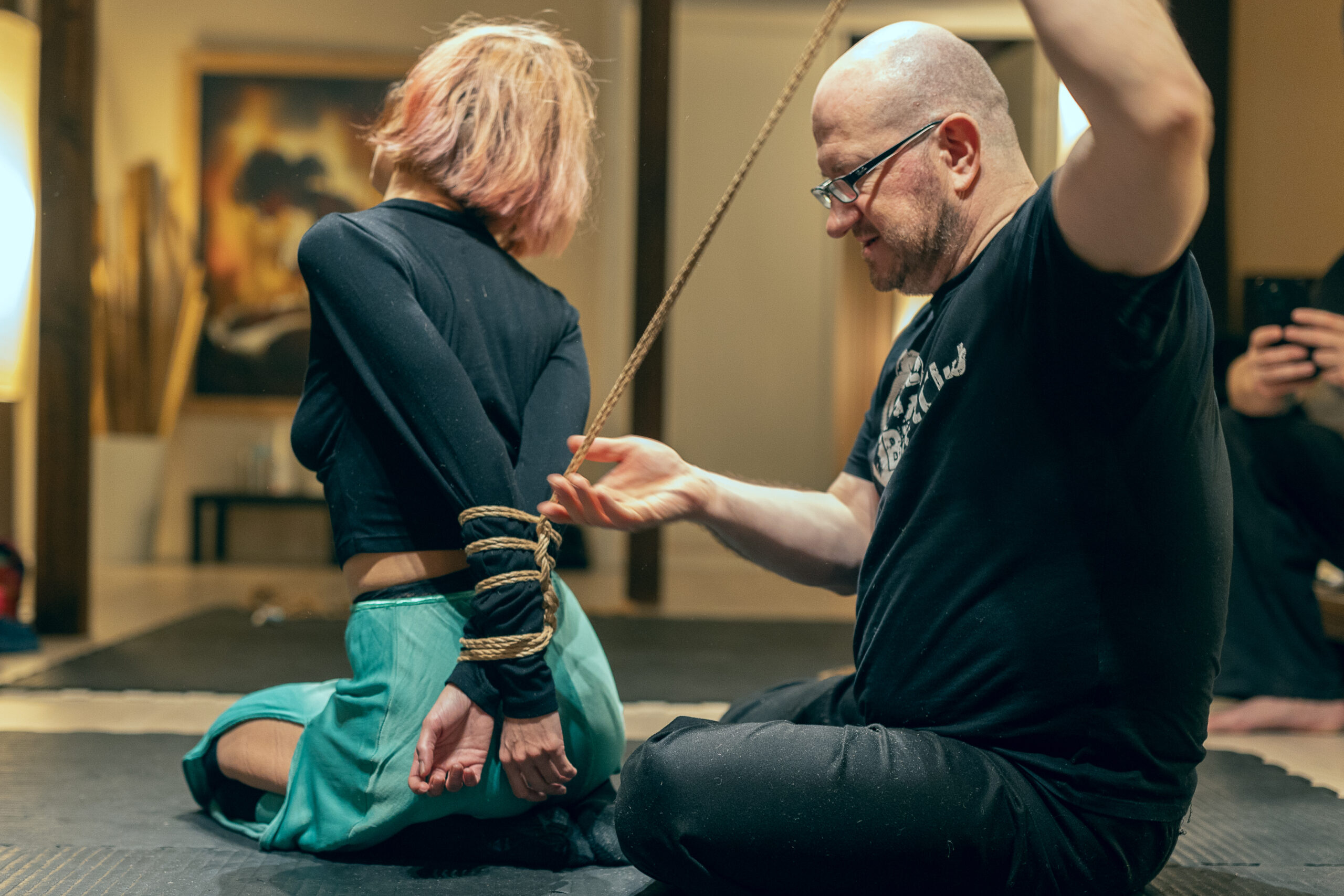Here is the question I got from a friend who is also a rope bottom, and I think it is relatable to many of us:
During sessions (more technical, learning sessions) I don’t feel much, except pain. I feel more after the session. How can I improve the feelings/emotions during the session?
I do not know if there are ALWAYS deep feelings to feel. Sometimes, there is not so much impact, especially during technical practice sessions. It can feel quite neutral and even boring for the model. It is less interactive – as all the attention of the rigger is on the knots and structures – quite static, not much happening, feeling rather like a training object. I think it is not helpful and not realistic to expect a fountain of emotions at this moment.
This is totally the case for me as well, when my partner is doing the demo on me in the class, especially a class with a technical focus. Tying feels not as good (as his attention is on students), less interaction (as his attention is on students), and what is required from me is mainly PATIENCE.
There is brilliant writing from Door (check out her blog SMothered if you don’t know it yet!) “On the merit of patience in rope models” – a wonderful story about patience, grace, and gratitude. As Door puts it, “because of the partnered nature of rope bondage, neither can fully develop without the help of their partner”
I couldn’t agree more! Seeing rope bondage as a somatic practice, as something that we learn with our bodies over time, we both need time for practice. In those moments, in a class, or a technical practice at home, we both can appreciate this time – time for practicing what we love.
So my bold proposal for today would be to change the question from “Why I’m not feeling much?” to “What do I want to practice?”
And here are some ideas of what practice could look like on our side of the ropes 🙂
Practice placement of attention. Something like a body scan, shifting my attention from one part to another. Pick one sensation and concentrate on it. Go all there with your attention. Magnify it with your attention. Focus on it like it was one thing in a world that exists. Stay with it as long as you can. How long can you have your attention at your will/control?
Feel the ropes. Breathe in and expand, feeling all the ropes on your body from inside. Do you feel different degrees of tightness on your body? Do you feel they “hug” your body or do they feel straight and “cut” your body in an unpleasant way? These are different qualities of how rope “sits” on your body.
Notice your posture. When in seiza – are you sitting straight? Where is your spine? Are you hunching forward? Maybe you find yourself in some awkward position. That’s also interesting to observe, isn’t it? Do you think there is a relationship between your posture and your inner feelings?
Play with pain. If it’s “safe pain”, of course. This futomomo won’t kill you. Find a connection between pain and your attention and breathing. (Hint: there is a connection). Can you soften up the tissue surrounding the painful spot and melt into it? Can you try to maintain even breathing in and out, just for a couple of seconds, and allow yourself to feel a sensation of pain, without shrinking and tensing up?
Can you approach it as a sensation, as an EXPERIENCE, instead of something to avoid and be afraid of? What is the quality of the pain, is it knife-like, does it touch your nerves? Or dull and annoying pressing just at the wrong spot? What if they meant it? Can you get excited about it?
Being a doll. How about going fully into the role of being an object for a demonstration/practice? That’s also a possibility and I’ve heard some find it very hot 😉
You will not notice when the practice/class is over… I believe that patience during practice can open access to an interesting introspective journey. I hope there is something here for you today.
